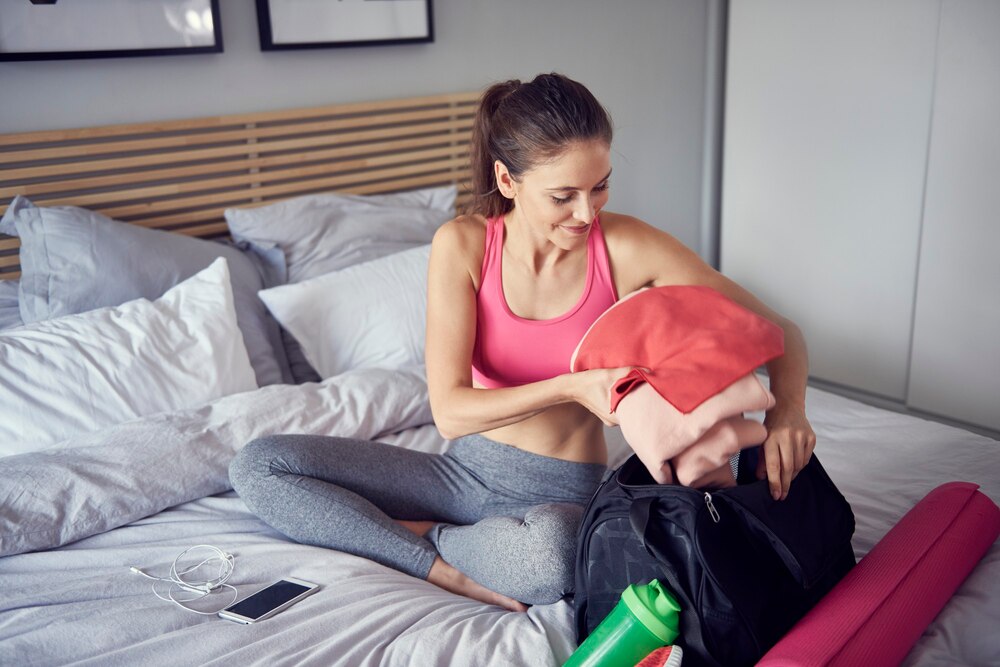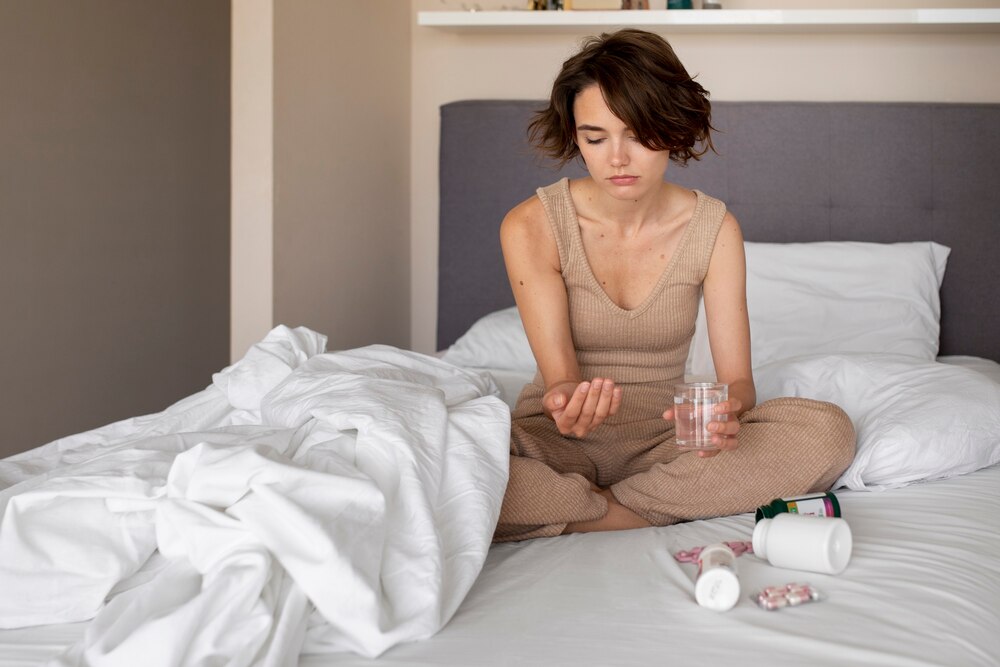Are you wondering why you’re experiencing such intense cramping after your period? Don’t worry, you’re not alone. Many women go through the same discomfort and are seeking answers just like you. In this article, we will delve into the possible causes of severe post-menstrual cramping and provide you with effective remedies for relief. It’s time to put an end to suffering in silence.
Post-menstrual cramping can be a frustrating and debilitating experience. It’s important to understand that every woman’s body is unique, and the severity of cramping can vary from person to person. One possible cause of intense cramping after your period is the shedding of the uterine lining. As the uterus contracts to expel the lining, it can cause pain and discomfort. Hormonal imbalances, such as an excess of prostaglandins, can also contribute to severe cramping.
Now that we’ve explored some possible causes, let’s focus on finding effective remedies for relief. One option is over-the-counter pain medications, such as ibuprofen, which can help alleviate the pain. Applying heat to your lower abdomen or taking a warm bath can also provide soothing relief. Additionally, practicing relaxation techniques, such as deep breathing or gentle stretching, can help relax the muscles and reduce cramping.
Don’t let severe post-menstrual cramping hold you back. By understanding the causes and exploring effective remedies, you can find relief and regain control over your menstrual cycle. Say goodbye to suffering in silence and embrace a life free from debilitating cramps.

1. Why Is Your Post-Menstrual Cramping Severe?
Menstrual cramping can be a common and uncomfortable experience for many women, but when the cramping persists and becomes severe after the period ends, it can be concerning. Several factors contribute to the intensity of post-menstrual cramping.
Understanding the Causes
One possible reason for severe post-menstrual cramping is the presence of underlying medical conditions such as endometriosis or uterine fibroids. These conditions can cause inflammation and excessive contractions of the uterus, leading to intense pain. Hormonal imbalances, such as an excess of prostaglandins, can also contribute to severe cramping.
Seeking Medical Advice
If you experience severe post-menstrual cramping, it is important to consult with a healthcare professional. They can evaluate your symptoms, conduct necessary tests, and provide appropriate treatment options. In the meantime, you can try various methods to alleviate the pain, such as taking over-the-counter pain relievers, using a heating pad, or practicing relaxation techniques.
How To Fix Intense Post-Menstrual Cramping
Menstrual cramping can be a painful experience for many women, but when it persists even after the period has ended, it can be even more distressing. Fortunately, there are ways to alleviate the intensity of post-menstrual cramping.
1. Over-the-counter pain relievers
Taking non-steroidal anti-inflammatory drugs (NSAIDs) such as ibuprofen can help reduce inflammation and relieve cramping.
2. Heat therapy
Applying a heating pad or taking a warm bath can help relax the muscles and alleviate cramping.
3. Gentle exercise
Engaging in light physical activity, such as walking or stretching, can help improve blood flow and reduce cramping.
4. Relaxation techniques
Practicing relaxation techniques, such as deep breathing or meditation, can help reduce stress and tension, which can contribute to cramping.
5. Hormonal birth control
Some women find relief from post-menstrual cramping by using hormonal birth control methods, such as the pill or an intrauterine device (IUD).
By incorporating these methods into your routine, you can effectively manage and reduce the intensity of post-menstrual cramping.
Common Reasons Why Cramping Persists After Period
One possible reason for the persistence of cramping after your period is the presence of uterine fibroids. These non-cancerous growths in the uterus can cause intense pain and cramping, even after menstruation. Another common cause is endometriosis, a condition where the tissue that normally lines the uterus grows outside of it. This can lead to inflammation and pain during and after menstruation. Additionally, pelvic inflammatory disease (PID) can cause cramping after your period. PID is an infection of the reproductive organs, often caused by sexually transmitted infections. Lastly, hormonal imbalances, such as an excess of prostaglandins, can also contribute to post-menstrual cramping. These hormones are responsible for triggering contractions in the uterus, which can result in pain. Understanding the underlying causes of your cramping can help you find effective ways to manage and alleviate the pain.
What Should I Do About Severe Post-Menstrual Cramping?
Severe post-menstrual cramping can be incredibly uncomfortable and disruptive to daily life. However, there are steps you can take to alleviate the pain and discomfort.
1. Take over-the-counter pain medication
Taking nonsteroidal anti-inflammatory drugs (NSAIDs) such as ibuprofen can help reduce inflammation and relieve cramping.
2. Apply heat
Using a heating pad or taking a warm bath can help relax the muscles and provide relief from cramping.
3. Practice relaxation techniques
Engaging in activities such as deep breathing exercises, meditation, or yoga can help reduce stress and tension, which can worsen cramping.
4. Stay hydrated
Drinking plenty of water can help prevent dehydration, which can contribute to muscle cramps.
5. Avoid triggers
Certain foods and beverages, such as caffeine and alcohol, can exacerbate cramping. It’s best to avoid these during the post-menstrual period.
Remember, if the pain is severe or persists for an extended period, it’s important to consult a healthcare professional for further evaluation and treatment options.
Why Is Your Post-Menstrual Cramping So Painful?
Post-menstrual cramping can be incredibly painful due to several factors. Firstly, the uterus contracts during menstruation to shed its lining, and these contractions can continue even after the period ends, causing pain. Additionally, hormonal imbalances can contribute to increased sensitivity to pain, making the cramping feel more intense.
1. The role of prostaglandins
Prostaglandins, hormone-like substances, are released during menstruation to stimulate uterine contractions. In some individuals, these prostaglandins continue to be produced even after the period, leading to prolonged and severe cramping.
2. Presence of underlying conditions
Certain underlying conditions, such as endometriosis or uterine fibroids, can cause post-menstrual cramping to be more painful. These conditions can lead to inflammation and abnormal tissue growth, exacerbating the cramping sensation.
By understanding the reasons behind the pain, individuals can take steps to alleviate it and improve their overall well-being.
How To Alleviate Severe Post-Menstrual Cramping
Dealing with severe post-menstrual cramping can be incredibly challenging, but there are several strategies you can try to alleviate the pain. Firstly, applying heat to the lower abdomen can provide relief by relaxing the muscles and reducing cramping. You can use a heating pad or take a warm bath to soothe the discomfort. Additionally, over-the-counter pain medications such as ibuprofen or naproxen can help to reduce inflammation and alleviate the pain. It’s important to follow the recommended dosage and consult with a healthcare professional if you have any concerns.
Engaging in gentle exercise, such as walking or stretching, can also help to relieve cramping by increasing blood flow and releasing endorphins. Additionally, practicing relaxation techniques like deep breathing or meditation can help to reduce stress and tension, which can exacerbate cramping. Lastly, incorporating a healthy diet rich in fruits, vegetables, and whole grains can support overall menstrual health and potentially reduce the severity of post-menstrual cramping.
Common Reasons Why Post-Menstrual Cramping Occurs
Post-menstrual cramping can occur for a variety of reasons, and understanding these common causes can help alleviate the discomfort. One of the main reasons for post-menstrual cramping is the shedding of the uterine lining. During menstruation, the uterus contracts to expel the lining, and these contractions can continue after the period ends, leading to cramping. Another common cause is hormonal fluctuations. The drop in estrogen and progesterone levels after menstruation can trigger muscle contractions in the uterus, resulting in cramping. Additionally, conditions such as endometriosis or fibroids can cause post-menstrual cramping. Endometriosis is a condition where the tissue lining the uterus grows outside of it, while fibroids are non-cancerous growths in the uterus. Both conditions can cause excessive cramping and pain after menstruation. It is important to consult with a healthcare provider to determine the underlying cause of post-menstrual cramping and to explore appropriate treatment options.










